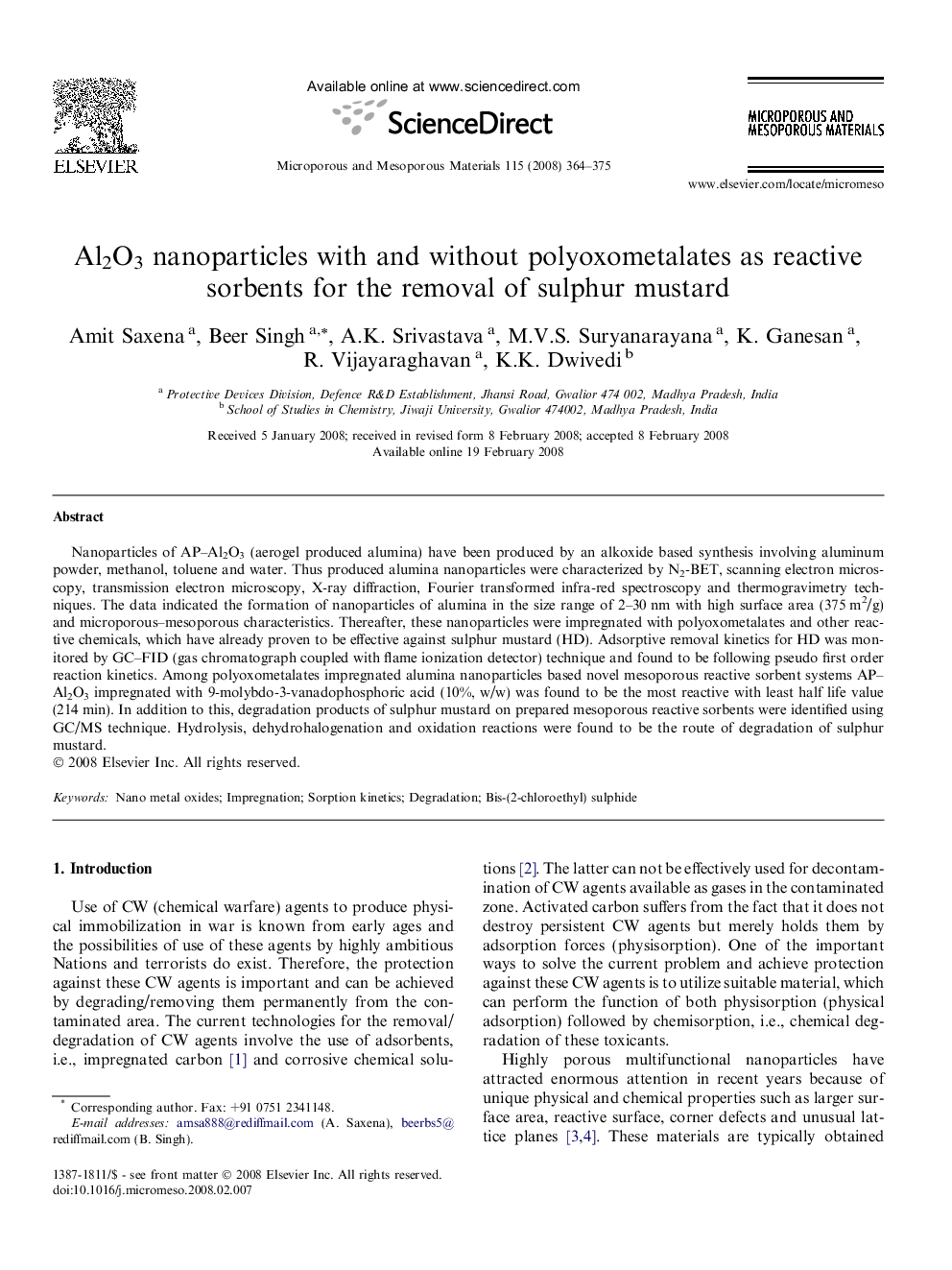| Article ID | Journal | Published Year | Pages | File Type |
|---|---|---|---|---|
| 76205 | Microporous and Mesoporous Materials | 2008 | 12 Pages |
Nanoparticles of AP–Al2O3 (aerogel produced alumina) have been produced by an alkoxide based synthesis involving aluminum powder, methanol, toluene and water. Thus produced alumina nanoparticles were characterized by N2-BET, scanning electron microscopy, transmission electron microscopy, X-ray diffraction, Fourier transformed infra-red spectroscopy and thermogravimetry techniques. The data indicated the formation of nanoparticles of alumina in the size range of 2–30 nm with high surface area (375 m2/g) and microporous–mesoporous characteristics. Thereafter, these nanoparticles were impregnated with polyoxometalates and other reactive chemicals, which have already proven to be effective against sulphur mustard (HD). Adsorptive removal kinetics for HD was monitored by GC–FID (gas chromatograph coupled with flame ionization detector) technique and found to be following pseudo first order reaction kinetics. Among polyoxometalates impregnated alumina nanoparticles based novel mesoporous reactive sorbent systems AP–Al2O3 impregnated with 9-molybdo-3-vanadophosphoric acid (10%, w/w) was found to be the most reactive with least half life value (214 min). In addition to this, degradation products of sulphur mustard on prepared mesoporous reactive sorbents were identified using GC/MS technique. Hydrolysis, dehydrohalogenation and oxidation reactions were found to be the route of degradation of sulphur mustard.
